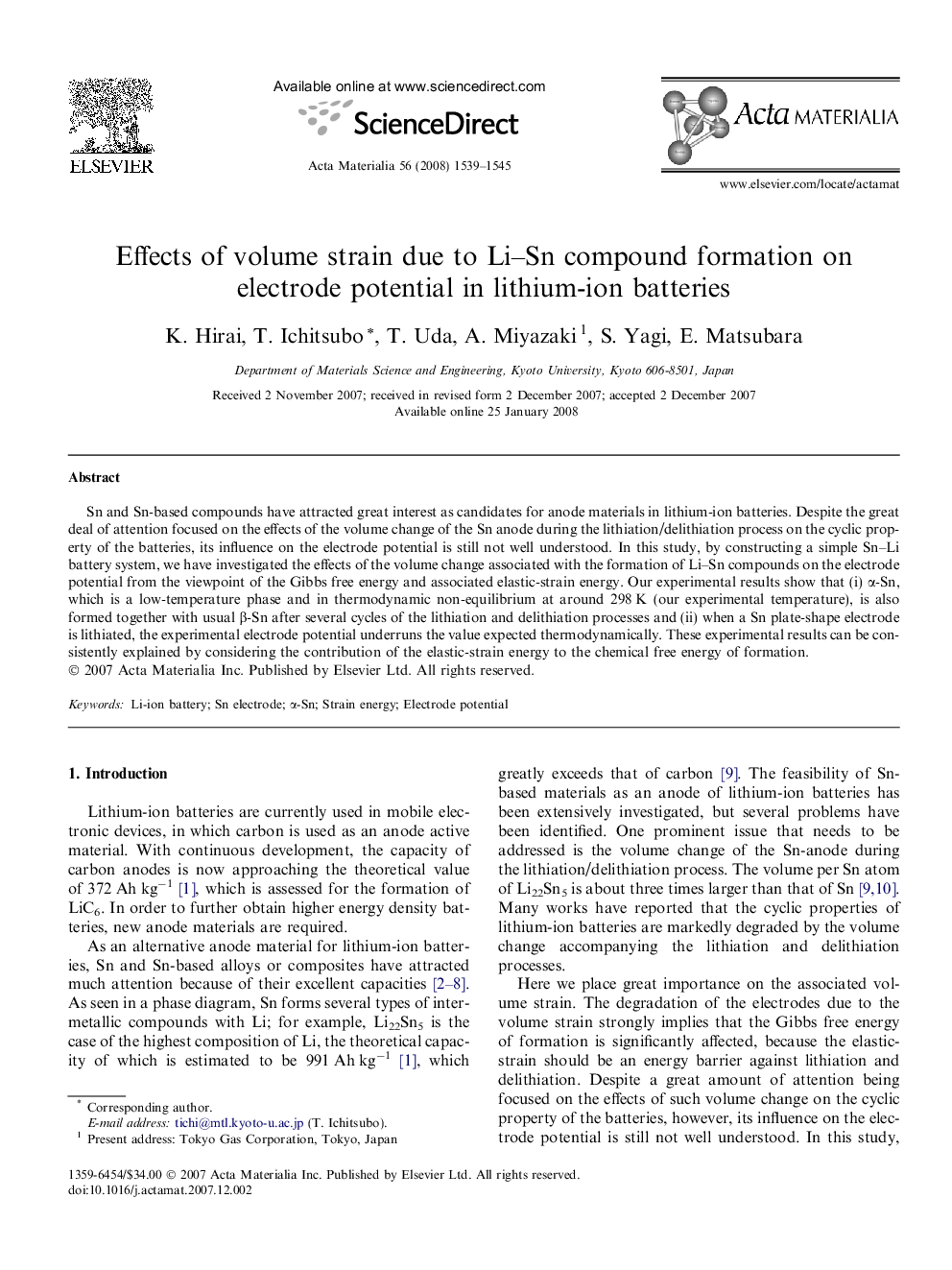| Article ID | Journal | Published Year | Pages | File Type |
|---|---|---|---|---|
| 1450475 | Acta Materialia | 2008 | 7 Pages |
Sn and Sn-based compounds have attracted great interest as candidates for anode materials in lithium-ion batteries. Despite the great deal of attention focused on the effects of the volume change of the Sn anode during the lithiation/delithiation process on the cyclic property of the batteries, its influence on the electrode potential is still not well understood. In this study, by constructing a simple Sn–Li battery system, we have investigated the effects of the volume change associated with the formation of Li–Sn compounds on the electrode potential from the viewpoint of the Gibbs free energy and associated elastic-strain energy. Our experimental results show that (i) α-Sn, which is a low-temperature phase and in thermodynamic non-equilibrium at around 298 K (our experimental temperature), is also formed together with usual β-Sn after several cycles of the lithiation and delithiation processes and (ii) when a Sn plate-shape electrode is lithiated, the experimental electrode potential underruns the value expected thermodynamically. These experimental results can be consistently explained by considering the contribution of the elastic-strain energy to the chemical free energy of formation.
